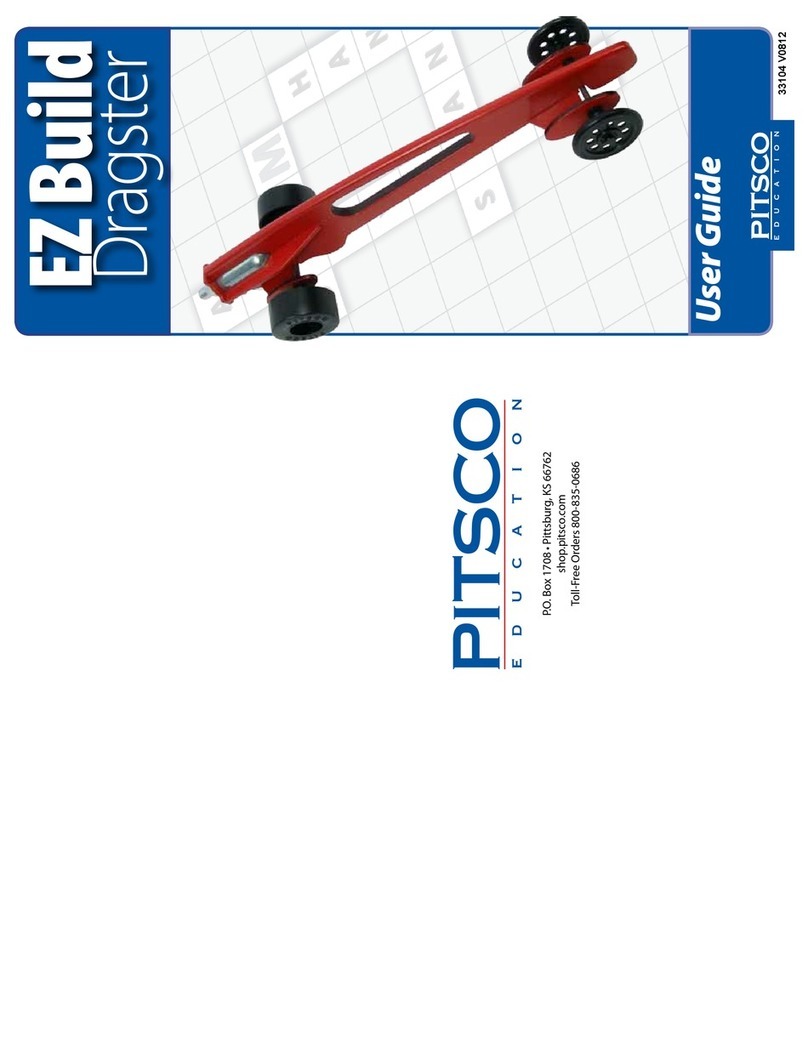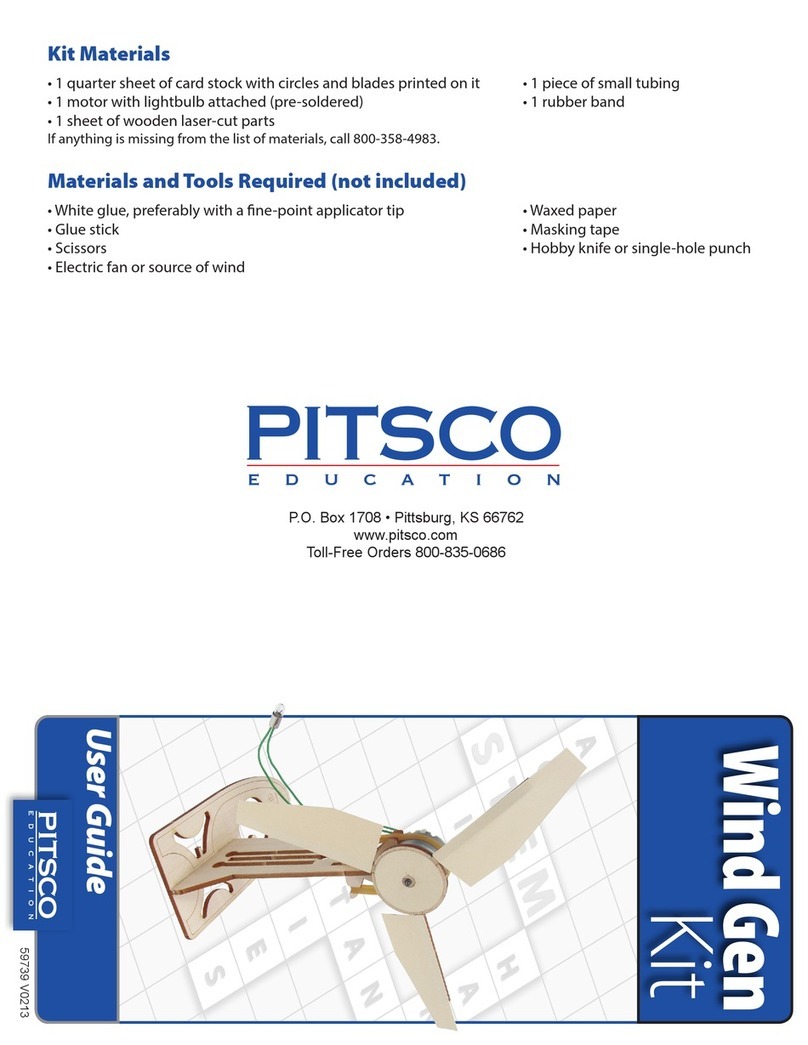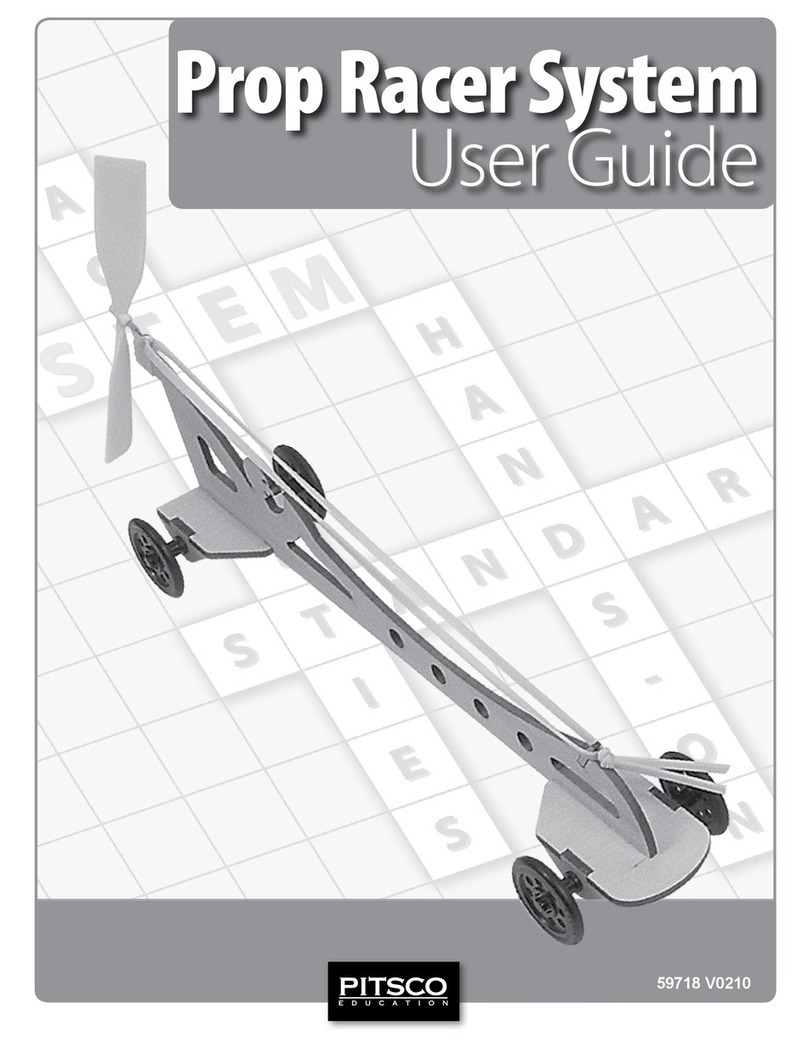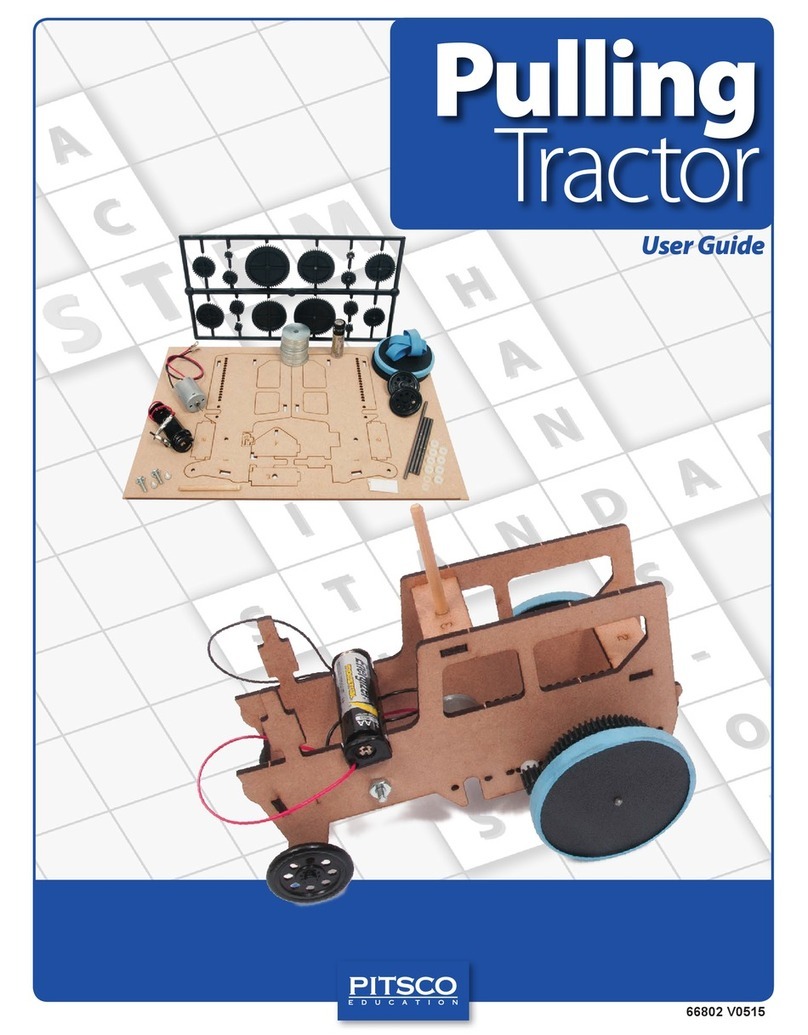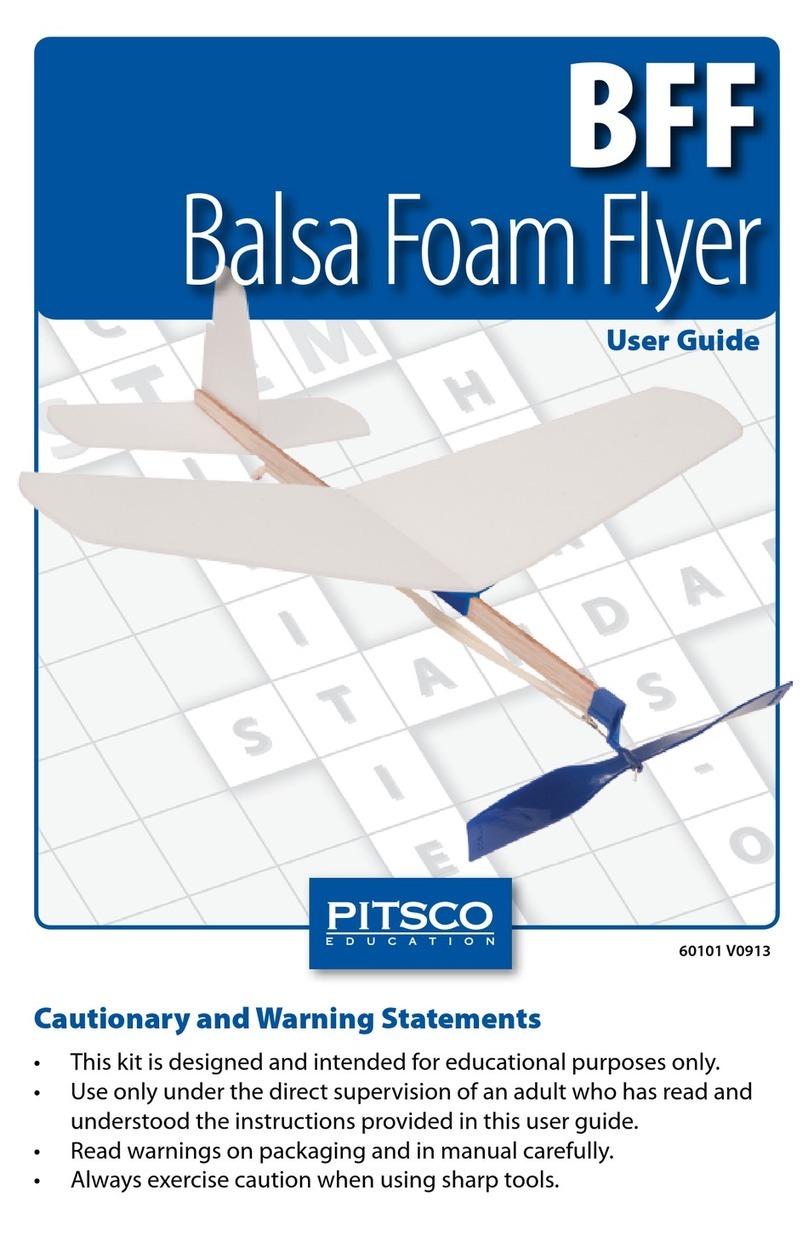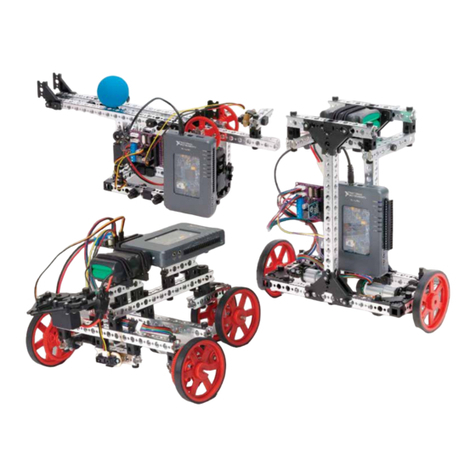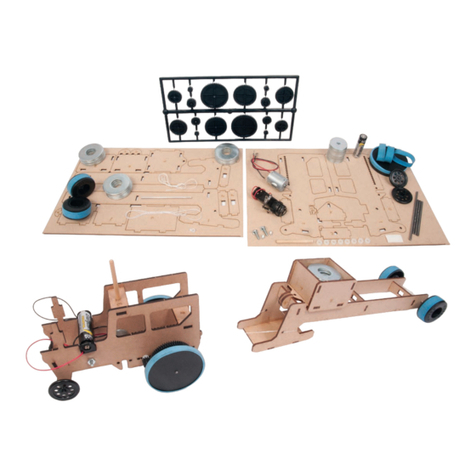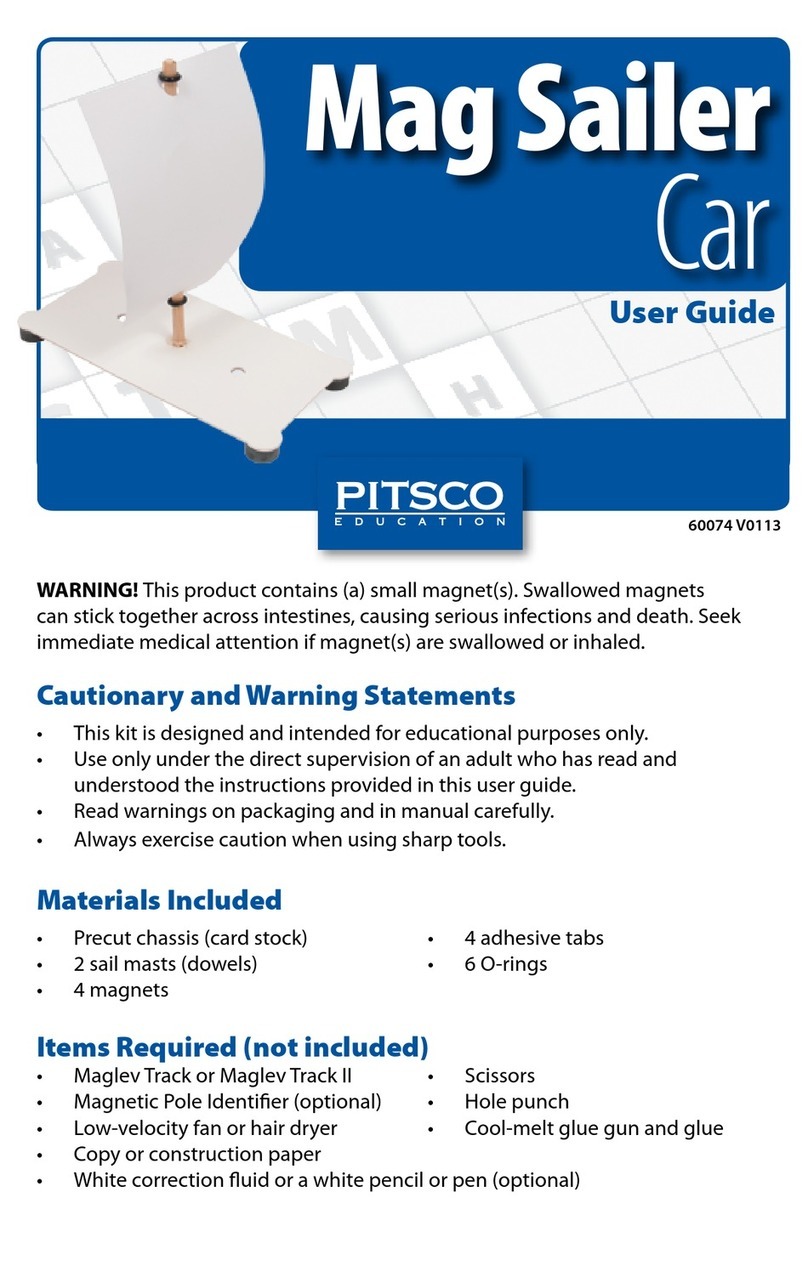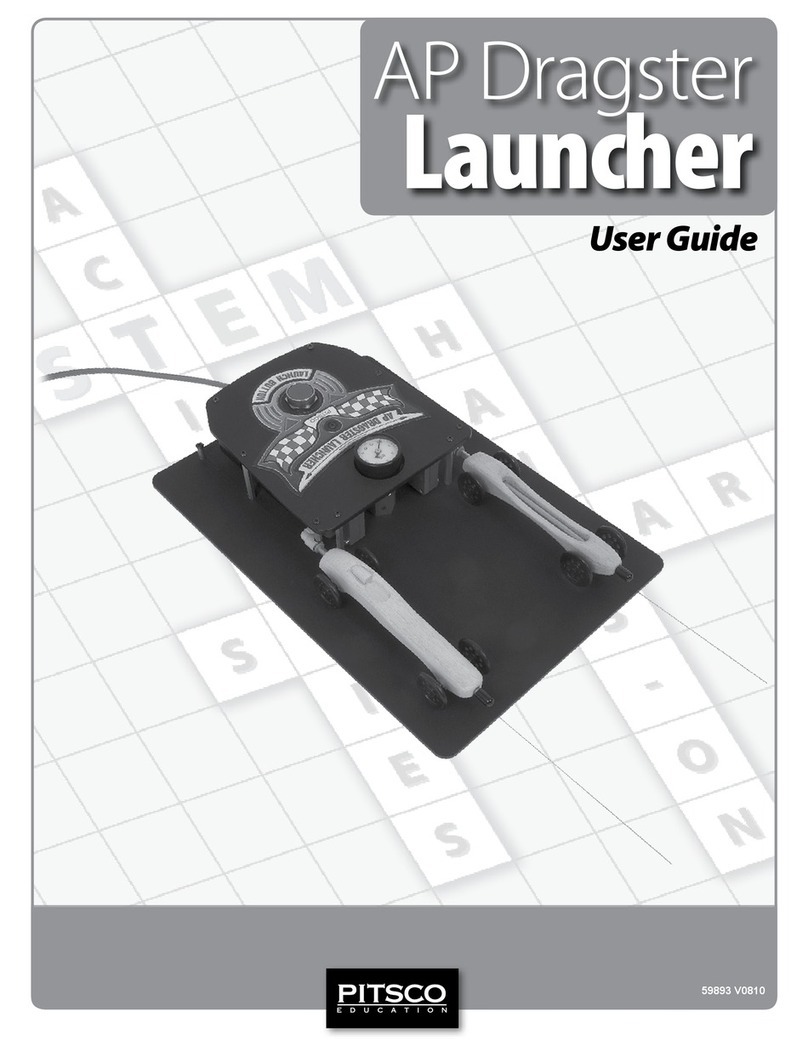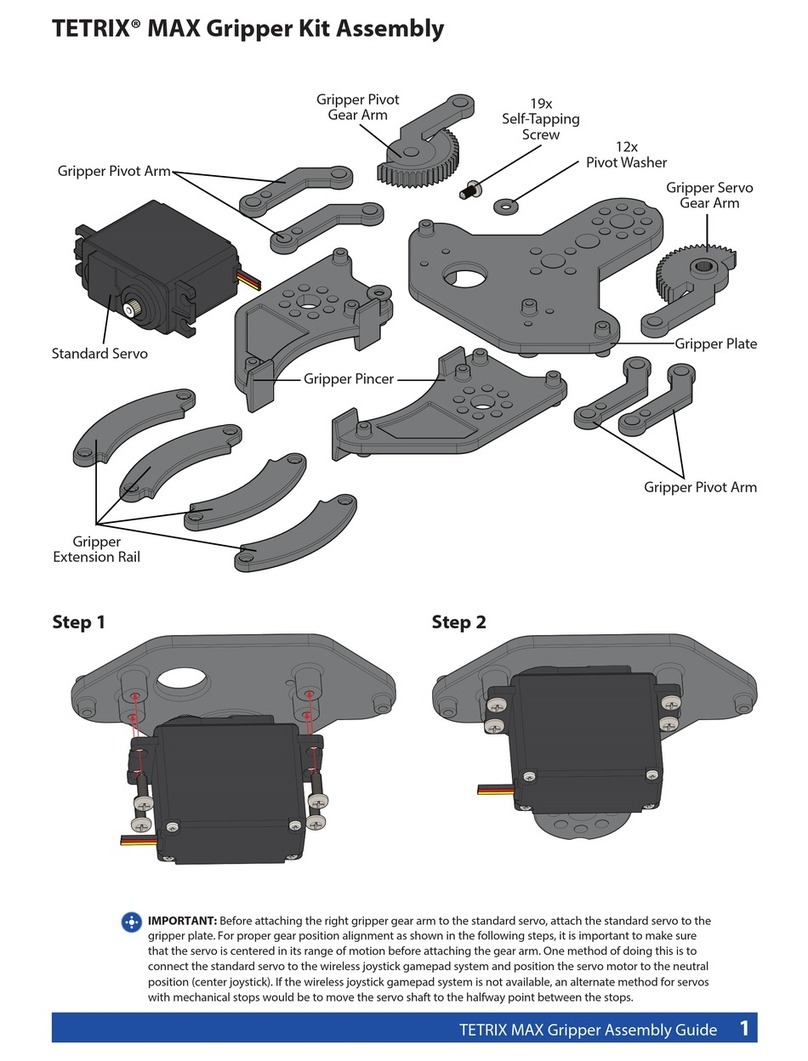LSRAV Dragster User Guide 58580 V0110 3
2. Tape the templates onto the wooden body blank and use a
pencil to trace around them. Locate the axle holes (1" from the
end and 3/8" from the bottom of the wooden body blank) and
engine housing. Remove the templates.
3. Drill the axle holes. If available, use a drill press to ensure the
holes are drilled perpendicular to the dragster body.
4. Use a band saw or a jigsaw to cut the side view first. Then, cut
the top view that was traced onto the bottom of the body
blank.
5. Use a wood rasp to shape the body. Use sandpaper to smooth
it.
6. If sanding sealer is available, apply a coat to the dragster. After
the sealer dries, sand lightly with wet or dry sandpaper.
7. Apply several coats of spray paint, letting each coat dry before
applying the next coat. If using acrylic paint, apply a coat of
clear acrylic finish over the dried paint to provide an even,
glossy finish. When the finish is dry, add decals if desired.
8. Cut the straw into two pieces about 1/8" longer than the width
of the dragster body at each axle. Insert the cut straws in the
axle holes – they will act as bearing surfaces. Insert the axles
and place washers over the axle ends.
9. Firmly push the wide wheels on the back axle. Push the narrow
wheels on the front axle. Position wheels on the axles so they
have a little room between the wheels and the straw ends. The
wheels should spin freely.
10. Install the screw eyes on the dragster bottom about 3/4" to
1-1/2" from each end of the body, making sure they are
centered. Caution: Be sure the screw eyes are not directly
under the axles.
11. Your LSRAV should be ready for a test run. Follow your teacher’s
instructions. (See a picture of a completed dragster on the next
page.)
